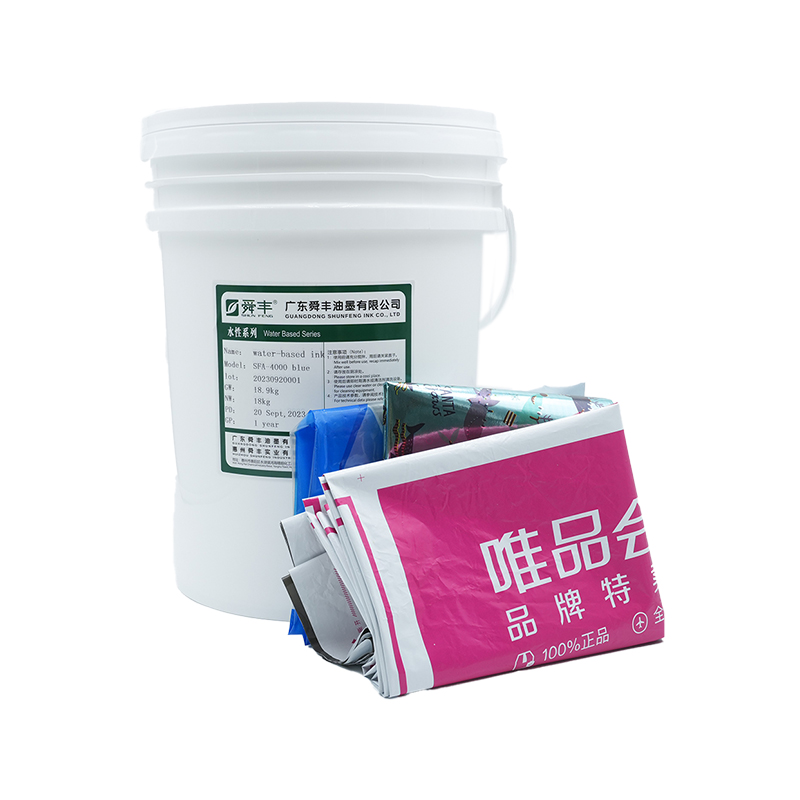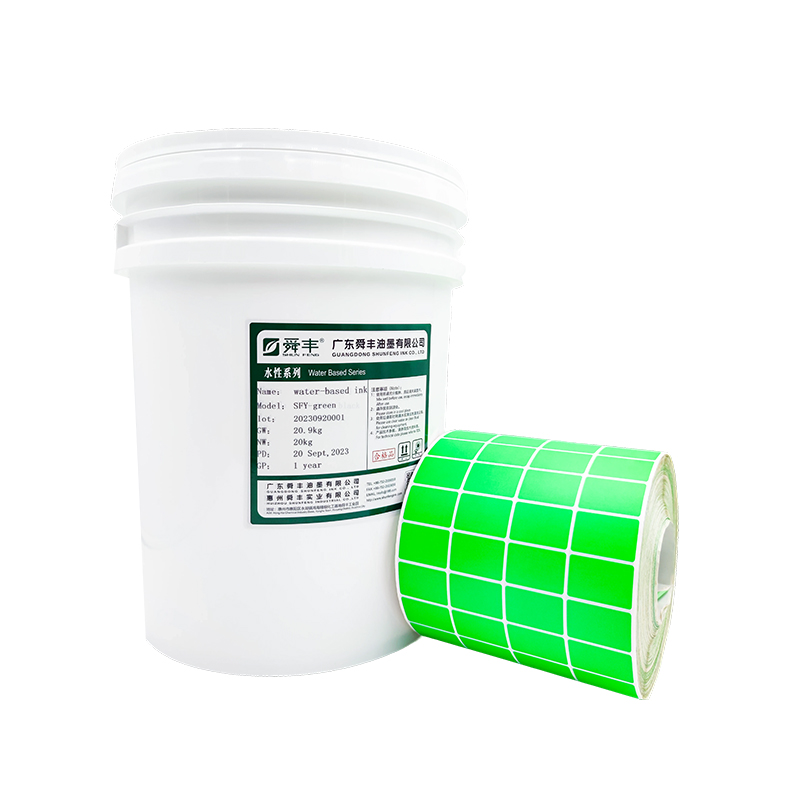How to ensure the anti-blocking performance of Flexo water-based pre-printing ink in the overprinting process?
Release Time : 2025-10-16
The anti-blocking properties of Flexo water-based pre-printing ink are crucial in the overprinting process. Ensuring this requires coordinated optimization of ink formulation design, printing process control, and equipment adaptation. As a water-based system, the ink's anti-blocking properties are directly influenced by the resin type, pigment dispersion, and additive dosage. The drying state of the ink film, interlayer adhesion, and ambient temperature and humidity during the overprinting process further determine its ultimate performance.
In ink formulation, resin selection is fundamental to achieving anti-blocking properties. Water-based resins must balance flexibility and hardness to avoid excessive softening that can cause blocking after overprinting. For example, a combination of modified acrylic resin and polyurethane resin can improve heat resistance while maintaining adhesion, reducing the risk of blocking in overprinting layers under high-temperature conditions. Uniform pigment dispersion is also crucial. Aggregation of pigment particles results in a rough ink film surface, increasing interlayer gaps during overprinting and making it more susceptible to blocking due to external forces. Therefore, an appropriate amount of dispersant must be added to the formulation to ensure stable suspension of pigment particles and form a dense ink film.
In the printing process, controlling the drying speed is crucial for achieving anti-blocking properties. During overprinting, if the previous ink film is not completely dry, the solvent of the subsequent ink will penetrate into the underlying layer, causing the film to soften and stick. To achieve this, the drying temperature and air speed must be adjusted according to the ink's characteristics. For example, when printing dark blocks, the drying temperature can be appropriately lowered to prolong the curing time of the ink film to prevent the surface from drying too quickly while the interior remains wet. For overprinting light colors or fine lines, drying efficiency must be increased to prevent the subsequent ink from dissolving the previous film. Furthermore, precise adjustment of printing pressure is crucial. Excessive pressure will result in a thinner ink film, weakening the interlayer bond; while insufficient pressure will result in a thicker film, prolonging the drying time and potentially causing blocking.
In terms of equipment compatibility, the choice of anilox roller directly impacts ink transfer and film thickness. During the overprinting process, using a high-line-count anilox roller reduces the amount of flexo water-based pre-printing ink transferred, resulting in a thinner ink film and faster drying, which can reduce the risk of sticking. However, if the line count is too high, the ink can easily dry in the cells, causing plate blocking. Therefore, the appropriate line-count anilox roller should be selected based on the ink viscosity and printing speed. A line count between 300 and 600 L/in is generally recommended. Furthermore, the printing press's drying system should have a zone control function that dynamically adjusts the drying intensity of each color group based on the overprinting sequence, ensuring that each color ink film reaches optimal dryness before overprinting.
Controlling ambient temperature and humidity is also crucial. High temperature and high humidity slows ink drying, softening the ink film and increasing the risk of sticking after overprinting. Low temperature and low humidity can cause the ink to dry too quickly, brittle the ink film, and weaken interlayer bonding. Therefore, the printing room should be equipped with a constant temperature and humidity system to maintain a temperature of 20-25°C and a relative humidity of 50%-65% to maintain the stable performance of the flexo water-based pre-printing ink. Furthermore, the surface treatment of the printing material also requires attention. If the substrate surface roughness is insufficient, the ink will not adhere firmly, and friction during overprinting can easily cause the ink film to peel and stick.
The application of additives is an effective means of improving anti-blocking properties. For example, adding wax powder can reduce the surface energy of the ink film, reducing friction between overprinted layers; adding a crosslinker can enhance the heat and chemical resistance of the ink film, preventing blocking in high-temperature environments. However, it is important to strictly control the amount of additives added. Excessive addition may cause changes in ink viscosity and affect printability.
In actual application, ensuring anti-blocking properties depends on specific process requirements. For example, in food packaging printing, environmentally friendly additives are preferred to prevent residue migration. In electronic product packaging printing, attention should be paid to the scratch and chemical resistance of the ink film to ensure long-term storage without blocking after overprinting. Through comprehensive optimization of formulation, process, and equipment, Flexo water-based pre-printing ink can effectively ensure anti-blocking properties during overprinting processes, meeting the requirements of high-quality packaging printing.







